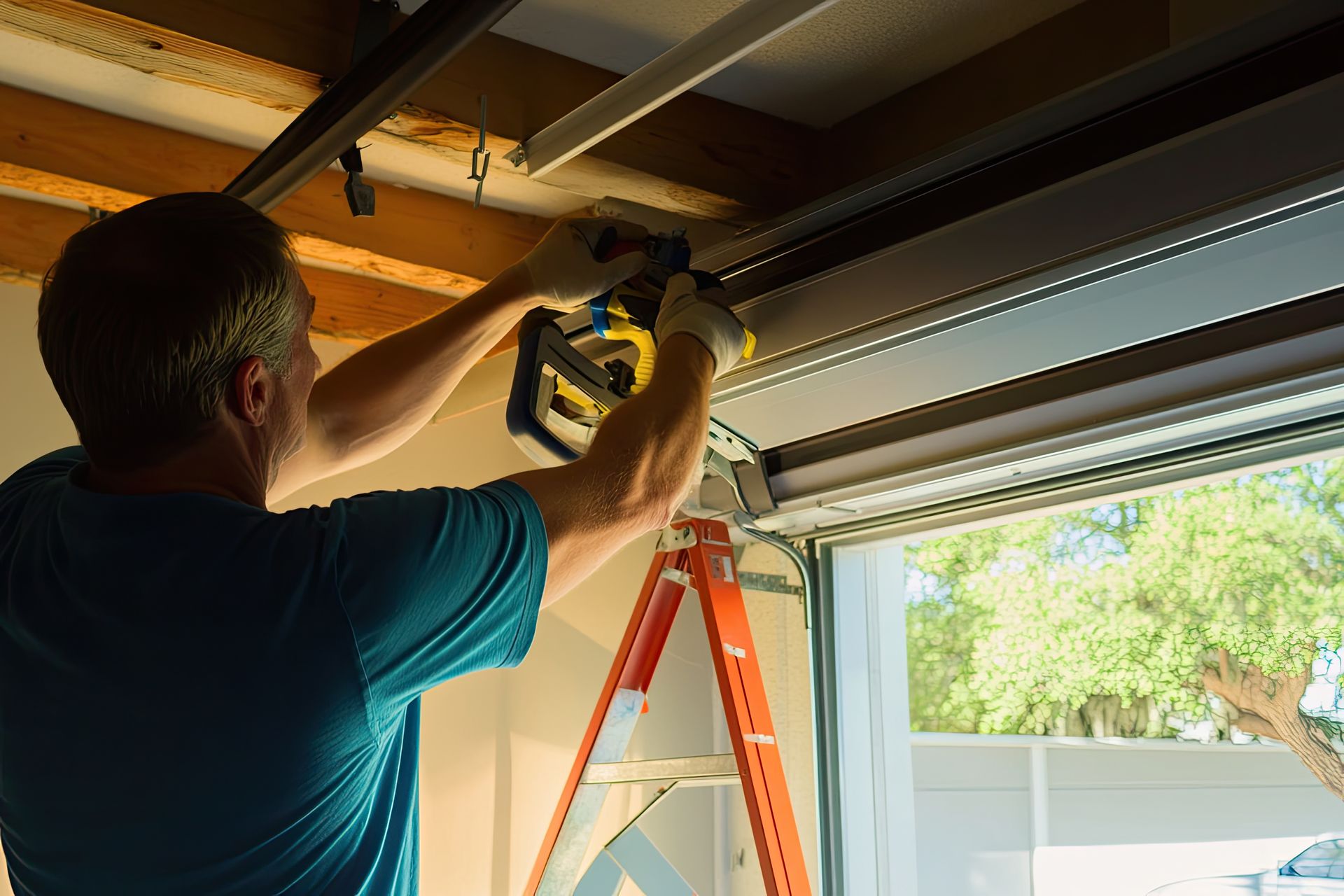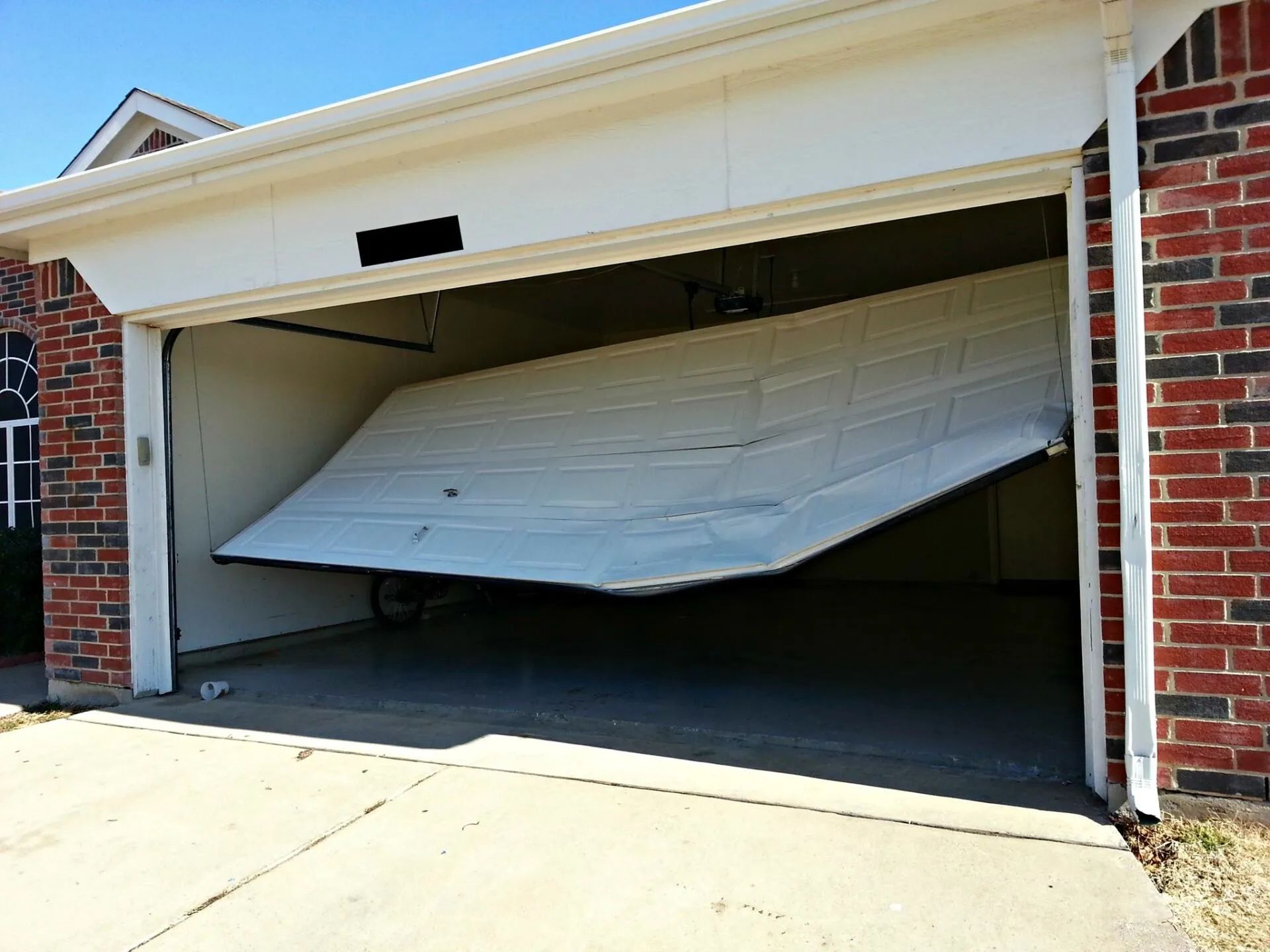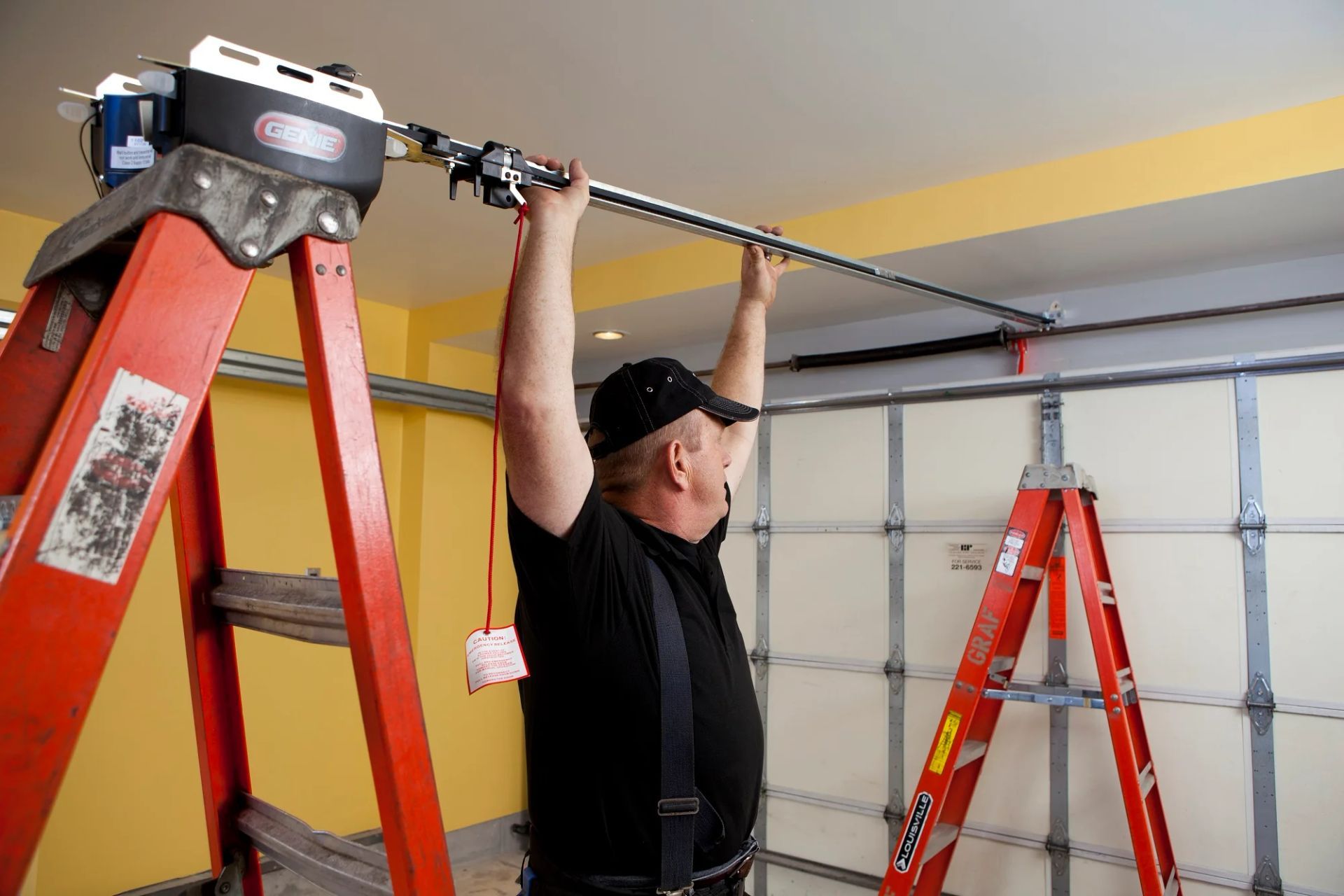When Your Garage Door Won't Open: Garage Door Repair Tips

A garage door that refuses to open can be a frustrating experience for any homeowner. Whether you're late for work or simply trying to get your car out of the garage, a malfunctioning door can throw a wrench in your day. In Peoria, AZ, where the weather can impact your garage door's functionality, knowing how to address this issue is crucial. This guide will provide you with practical steps to troubleshoot your garage door problems and when to call in the experts for garage door repair in Peoria, AZ.
Understanding Your Garage Door System
Before diving into troubleshooting, it's essential to understand the components of your garage door system. Most garage doors consist of the following parts: Click Garage Door Repair: Embrace Modern Garage Door Designs for more details.
- Garage Door Opener: This is the motorized device that powers your garage door. It can be a chain, belt, or screw drive.
- Remote Control: This is the device you use to open and close the door from a distance.
- Sensors: Located at the base of the door, these sensors prevent the door from closing if something is in the way.
- Springs: These are critical for the lifting mechanism of the door.
- Tracks and Rollers: These guide the door up and down when opening and closing.
Familiarity with these parts will help you understand potential issues and the repair process.
Common Reasons Your Garage Door Won't Open
- Power Issues: The first thing to check is whether your garage door opener is receiving power. If the opener is plugged into an outlet, make sure that the outlet is working. You can test this by plugging in another device, such as a lamp. If the outlet is dead, check your circuit breaker to see if a fuse has blown or a breaker has tripped.
- Remote Control Problems: If your garage door opener is powered but the door won't open, the problem may lie with your remote control. Check the batteries in the remote; if they're dead, replace them. If the remote still doesn’t work, try using the wall switch. If the wall switch operates the door, then the remote is likely the issue.
- Obstructed Sensors: If your garage door opener's sensors are obstructed or dirty, the door may not operate correctly. Check to ensure that there are no objects blocking the sensors and clean the lens with a soft cloth to remove any dirt or debris.
- Damaged Springs: Garage door springs are under a lot of tension and can wear out over time. If you hear a loud bang or see a gap in the spring, it might be broken. Do not attempt to repair or replace a spring yourself, as this can be dangerous. Call a professional garage door repair service in Peoria, AZ, if you suspect spring issues.
- Misaligned Tracks: If your garage door seems to be stuck or off-track, inspect the tracks on either side of the door. If they are bent or misaligned, this can prevent the door from opening. Use a level to check the tracks, and if they are not aligned, you may need to adjust them.
- Mechanical Failure: Other mechanical issues could prevent your garage door from opening. This might include a malfunctioning motor, broken gears, or a worn-out chain. These problems often require the expertise of a garage door repair Peoria AZ professional.
Steps To Troubleshoot Your Garage Door
When faced with a garage door that won't open, follow these troubleshooting steps:
Step 1: Check Power Supply
- Inspect the Outlet: Confirm that your garage door opener is plugged into a working outlet. If it's not, plug it back in or try a different outlet.
- Examine Circuit Breaker: If the outlet isn’t the issue, check your home's circuit breaker to ensure that the breaker for the garage is not tripped.
Step 2: Test The Remote Control
- Change Batteries: Replace the batteries in your remote control and try again.
- Use the Wall Switch: If the remote control doesn’t work, try the wall switch to determine if the opener is functional.
Step 3: Inspect The Sensors
- Clear Obstructions: Ensure there are no objects blocking the sensors. Clear any debris, toys, or tools from the sensor area.
- Clean the Sensors: Wipe the sensor lenses with a soft cloth to ensure they are free of dirt.
Step 4: Check The Garage Door Springs
- Look for Gaps: Inspect the springs for any visible gaps or damage. If you notice any, do not attempt to fix them yourself.
Step 5: Align the Tracks
- Examine the Tracks: Look for bends or misalignment in the tracks. If they are misaligned, you can try to gently tap them back into place using a rubber mallet.
Step 6: Call A Professional
If your troubleshooting efforts do not resolve the issue, it’s time to call JCTZ Garage Doors. Their experienced technicians can diagnose and fix problems that may not be apparent to an untrained eye.
When To Call A Professional For Garage Door Repair
While some garage door issues can be resolved with a bit of DIY effort, there are situations where it’s best to call in the professionals. Here are some scenarios where you should consider hiring a garage door repair service:
- Broken Springs: As mentioned, garage door springs are under extreme tension. Attempting to repair or replace them without proper tools and knowledge can be hazardous.
- Electrical Issues: If the issue seems to be electrical and you are unsure how to proceed, it’s safer to contact a professional. Electrical components can pose serious risks if handled improperly.
- Complex Mechanical Failures: If the problem involves complex mechanics like the opener's motor or internal gears, a technician will have the expertise to identify and fix the problem safely.
- Persistent Problems: If you’ve attempted multiple troubleshooting steps and your garage door still won’t open, it’s a clear sign that professional intervention is needed.
Preventative Maintenance Tips For Your Garage Door
To avoid future garage door issues, consider these preventative maintenance tips:
- Regular Inspections: Schedule routine inspections of your garage door system to catch potential problems early.
- Lubrication: Regularly lubricate moving parts such as hinges, rollers, and tracks to ensure smooth operation.
- Check the Sensors: Periodically clean the sensors and ensure they are aligned correctly.
- Test the Safety Features: Regularly test your garage door's safety features, including the auto-reverse function, to ensure they work properly.
- Professional Maintenance: Consider hiring a professional for annual maintenance checks to keep your garage door in top shape.
Conclusion
Experiencing a garage door that won't open can be a significant inconvenience, but with the right knowledge and troubleshooting steps, you can often diagnose the problem yourself. Whether it’s a simple power issue or a more complex mechanical failure, understanding the components of your garage door system is crucial.
If you’re located in Peoria, AZ, and find yourself in need of garage door repair services, don’t hesitate to
contact JCTZ Garage Doors. Our experienced technicians are here to help you get your garage door back in working order promptly and safely. Remember, regular maintenance can prevent many issues, ensuring your garage door operates smoothly for years to come.
Seamless Solutions for Every Garage Door Need
At JCTZ Garage Doors, we deliver precision, reliability, and innovation. From expert repairs to custom installations, our services ensure your garage door functions flawlessly, keeping your home secure and stylish. Experience effortless operation with cutting-edge technology and unmatched craftsmanship, tailored just for you.
Garage Door Repair
Our skilled technicians swiftly diagnose and fix any garage door issue, from faulty tracks to damaged panels, ensuring your door operates smoothly and safely.
Garage Door Maintenance
Preventive care is key to longevity. Our maintenance service keeps your garage door in top condition, identifying and addressing potential problems before they escalate.
Garage Door Installation
Trust us for seamless installation of high-quality garage doors. Our expert team customizes solutions to match your style and security requirements.
Garage Door Opener Installation
Upgrade your garage with a new opener for convenience and security. Our installation service ensures seamless integration and reliable performance.
Garage Opener Repair
If your opener is malfunctioning, we provide efficient repairs to restore effortless door operation, ensuring convenience and security.
Garage Door Spring Repair
We specialize in garage spring repair, ensuring your door operates safely and efficiently. Our experts replace or adjust springs to balance the door's weight effectively.
The Valleys Top Garage Door Repair Company
JCTZ GARAGE DOORS PROUDLY Serving Buckeye, AZ, and Surrounding Phoenix Area
Our range of garage door services caters to all Buckeye, AZ, residents and the surrounding Phoenix area. We are committed to delivering top-quality service and ensuring customer satisfaction in every job we undertake. Whether you need a minor repair or a complete garage door replacement, you can trust JCTZ Garage Doors to provide the best solutions for your needs.
Contact Us Today 623-335-3699
For reliable garage door repair, maintenance, and installation services in Buckeye, AZ, and the surrounding Phoenix area, contact JCTZ Garage Doors. Call us today at 623-335-3699 to schedule an appointment or to learn more about our services. Let us help you keep your garage door in perfect working condition!
Maricopa County
- Palm Valley
- Wickenburg
- Youngtown
- Litchfield Park
- Carefree
- Cave Creek
- Gila Bend
- Paradise Valley
- New River
- Anthem
- Sun City
- Sun City West
- Sun Lakes
- Rio Verde
- Tonopah
- Ajo
Copyright © JCTZ Garage Doors - Site design and SEO provided by ALKOR SEO







